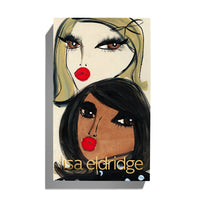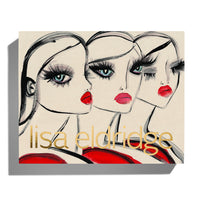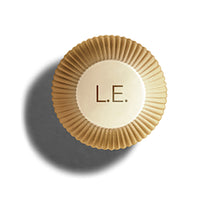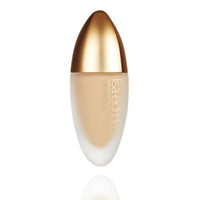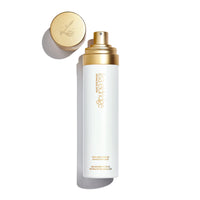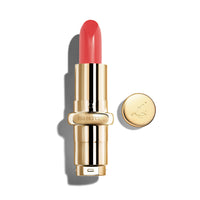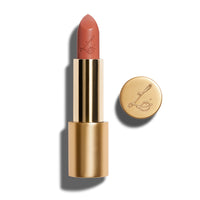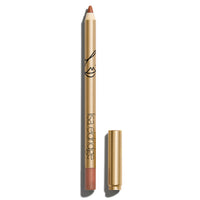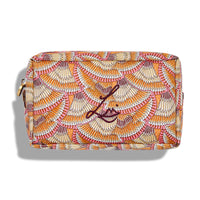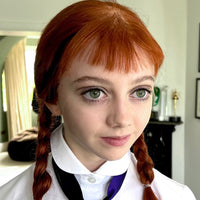You’re currently on our international website. US customers, please shop our US website.
My latest videos

The Look You All Begged Me To Recreate!

When Lipstick Became Power - The Scandalous 1920’s Makeup Revolution

The Dark Truth Behind the ‘Natural Beauty’ Lie of the Victorian Era - Makeup History with Lisa Eldridge

Inside the Wild Makeup Trends of Georgian High Society - Makeup History with Lisa Eldridge

Chats, LOL’s and Effortless Makeup with Alexa Chung

New Kits, New Products, New Shades

The Blush Trend Trap - How to Find What Flatters YOU

Trying The Very First Lipstick I Ever Owned! Can You Guess The Shade? What Was Yours?

Lipstick Textures - How to Find Your Best Finish

New Launch! - New Colour Story for Eyes and Lips

Brush Size (and Shape!) Matters

My Glow Sandwich 🥪💫 Glowy not greasy, ‘lit from within' skin in minutes

My Ultimate Guide to Bridal Makeup

Quick and Easy Eye Lift 💫

Quick Tip: Sculpt and Enhance Your Socket Line Like a Pro!
My portfolio

Kate Winslet - Port Magazine

Kate Winslet - Port Magazine

Kate Winslet - Port Magazine

Kate Winslet - Port Magazine

Keira Knightley - The Woman in Cabin 10 Premiere
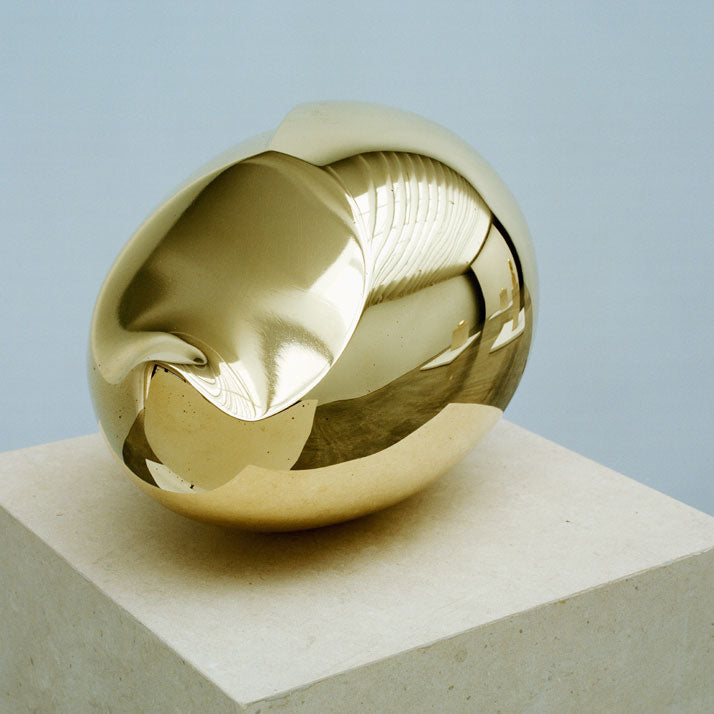
Inspiration: ‘Simplicity is Complexity Resolved’
One of the questions I’m often asked in interviews is, ‘where do you find inspiration?’ And though the answer is ‘everywhere!’, one person that I reference again and again is the sculptor Constantin Brâncuși. As an art-lover, I’ve spent countless afternoons strolling around galleries and museums, but still remember so vividly visiting the Pompidou Centre in 1995 to see a major retrospective of his work. Although I'd seen photographs of his sculptures before it was only when I saw them in the 'flesh' that I really understood. I remember thinking 'This is it!' and feeling quite euphoric. It was a real lightbulb moment for me and from then on I became obsessed with his ideas and work.
Brâncuși’s art centres around clean, geographical lines and simple forms (from tall columns to birds and fish) and he created his sculptures using materials with smooth surfaces like marble and bronze. He often produced different versions of the same sculpture, making them increasingly abstract and simplified each time - it’s this very simplistic, elegant style that he’s known for today and that drew me to him. I absolutely adore how Brâncuși can turn simple shapes and basic forms into truly beautiful pieces, and especially love his highly polished brass sculptures - the high shine catches the light to create the most beautiful highlights and reflections which are just stunning, and also very inspiring. It this polish and shine that I have tried to recreate in my own work... only my canvas is skin.
Brâncuși also had lots of great quotes about art and what it meant to him. One of my favourites is ‘simplicity is complexity resolved’ - it’s a saying I live by, and it works so well in makeup.
If you’re a Brâncuși fan you’ll know that he led a fascinating life. He was born in Hobitza, a small village in Romania, and studied at Craiova School of Arts & Crafts and Bucharest School of Fine Arts before walking from Romania to Paris in 1903 (when he was 27) to study at the Ecole des Beaux-Arts. The British film director Peter Greenaway is currently filming a Brâncuși biopic, ‘Walking to Paris’, which focuses on this trek across Europe and how it influenced Brâncuși’s later work - Greenaway says that, as he walked, Brâncuși was ‘constantly building sculptures out of found materials - wood, stone, sand, snow and ice, leaving a trail of abandoned experimental structures across the landscapes of Europe.’ Wouldn't you love to have stumbled across these?!
Though he spent the majority of his working life in Paris, the first show that really launched Brâncuși’s career was the Armory Show in New York in 1913. It was the first large exhibition of modern art in America and his work sat alongside prices by other contemporary artists like Van Gogh, Monet, Matisse, Picasso and Cézanne. One of the sculptures that he included in the show was Mademoiselle Pogany, a portrait of Brâncuși’s friend Margit Pogany, a young Hungarian artist. Though Mademoiselle Pogany is now one of Brâncuși’s most loved sculptures (and one of my favourites), at the show it was ridiculed by some of the press and exhibition visitors - they claimed her features were nonsensical (her nose was likened to a beak and her eyes were said to be bulbous). One journalist described the sculpture as ‘a hard-boiled egg balanced on a cube of sugar.’
But Brâncuși’s aim was always to show the ‘essence’ of his objects rather than ‘imitating the exterior’ - he’s brilliantly quoted as saying, ‘There are idiots who define my work as abstract; yet what they call abstract is what is most realistic. What is real is not the appearance, but the idea, the essence of things.’
Another of my favourite Brâncuși pieces is Le Poisson (or Fish). I remember visiting Kettle’s Yard gallery in Cambridge (currently closed for refurbishment) after I heard that they had a Brâncuși Poisson, which was displayed on a coffee table that you could sit right beside - it was really an amazing feeling to be so close to it. Brâncuși worked on his first Poisson sculpture for 10 years, obsessively trying to capture the perfect image of a fish in movement. He told Malvina Hoffman, an American sculptor, ‘When you think of a fish, you think of its speed, its floating, flashing body seen through water. I tried to express that. If I made fins and eyes and scales, I would arrest its movement and hold you by a pattern. I want you to see the flash of its spirit.’ Each Poisson is rotatable and sits on a reflective disc (or ‘pool’) - the movement, combined with the added reflection of the disc, really gives the impression that each Poisson is swimming in water.
I also love Bird in Space, a stunning, tall sculpture that Brâncuși designed to capture the essence of a bird soaring upwards. He made 15 versions in marble and bronze and, in 1926, sent one (along with some other pieces) to New York from Paris for an exhibition of his work at the Brummer Gallery. But when his sculptures reached the US, American customs officials seized them and refused to release them unless Brâncuși paid the import tax, from which artworks were exempt, as they claimed they weren’t art. Most of the sculptures were eventually given a transit visa, except Bird in Space, which was charged the high tax placed on raw metals. Brâncuși decided to press charges and, over a year later, won. The judgement made legal history and marked the moment that contemporary art entered American legislation (you can read more about this fascinating case on the MoMA website here). So really, quite amazingly, Brâncuși helped to change traditional conceptions about what art was, and what it could be.
When Brâncuși died in 1957 he left part of his collection to the French state on the condition that his workshop was rebuilt exactly as it was on the day he died - you can visit the reconstructed ‘Atelier Brâncuși’ at the Pompidou Centre in Paris (there’s 137 sculptures as well as drawings and original photos taken by Brâncuși). It's definitely worth seeing if you’re ever in Paris and are interested in his work, as there are very few Brâncuși retrospectives today (largely due to the fragility of his sculptures, which limits transportation).
One of the most recent retrospectives was ‘Brâncuși in New York 1913-2013’ which was held at the Paul Kasmin Gallery in New York, marking the 100 year anniversary of the Armory Show (some of the images in this post are taken from the show and the beautiful exhibition book which I bought recently). I read a quote from the gallery owner Paul Kasmin which I think sums up Brâncuși's legacy beautifully - he said that Brâncuși is 'still the most modern of modern sculptors.’
Which artists and pieces of art inspire you in your work or everyday life?
Images from top:
1 Mademoiselle Pogany II (image from the book Brancusi New York 1913-2013)
2 Le Nouveau Né I (The Newborn) on display at the Paul Kasmin gallery
3 Italian actress Sylvana Mangano at the MoMA in 1956 with Mademoiselle Pogany (image from the book Brancusi New York 1913-2013)
4 Mademoiselle Pogany II on display at the Paul Kasmin gallery
5 Le Poisson on display at the Paul Kasmin gallery
6 Sleeping Muse (image from the book Brancusi New York 1913-2013)
7 Bird in Space on display at the Metropolitan Museum of Art
8 Brancusi’s studio, Paris, 1955 (image from the book Brancusi New York 1913-2013)


